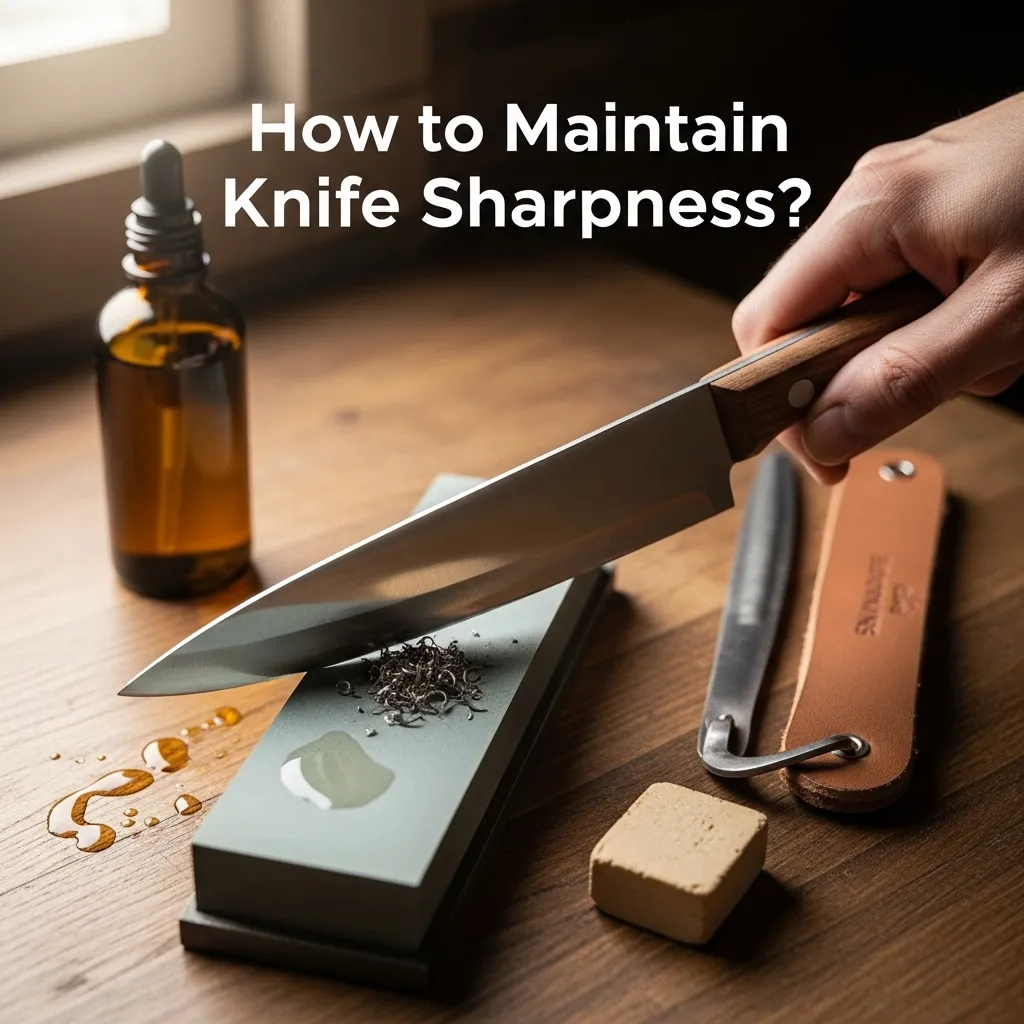Keeping your knives sharp is mostly about building good habits and using the right tools. I find that with a little regular attention, anyone can have a blade that slices easily and safely.
I’ve spent years in my home kitchen, and I love helping friends feel confident with their tools. A sharp knife makes cooking fun and efficient. In this article, I’ll share what I’ve learned about keeping knives in great shape. We’ll cover daily care, storage ideas, and simple sharpening steps. My goal is to give you clear, useful advice that you can start using right away.
Why a Sharp Knife Makes All the Difference
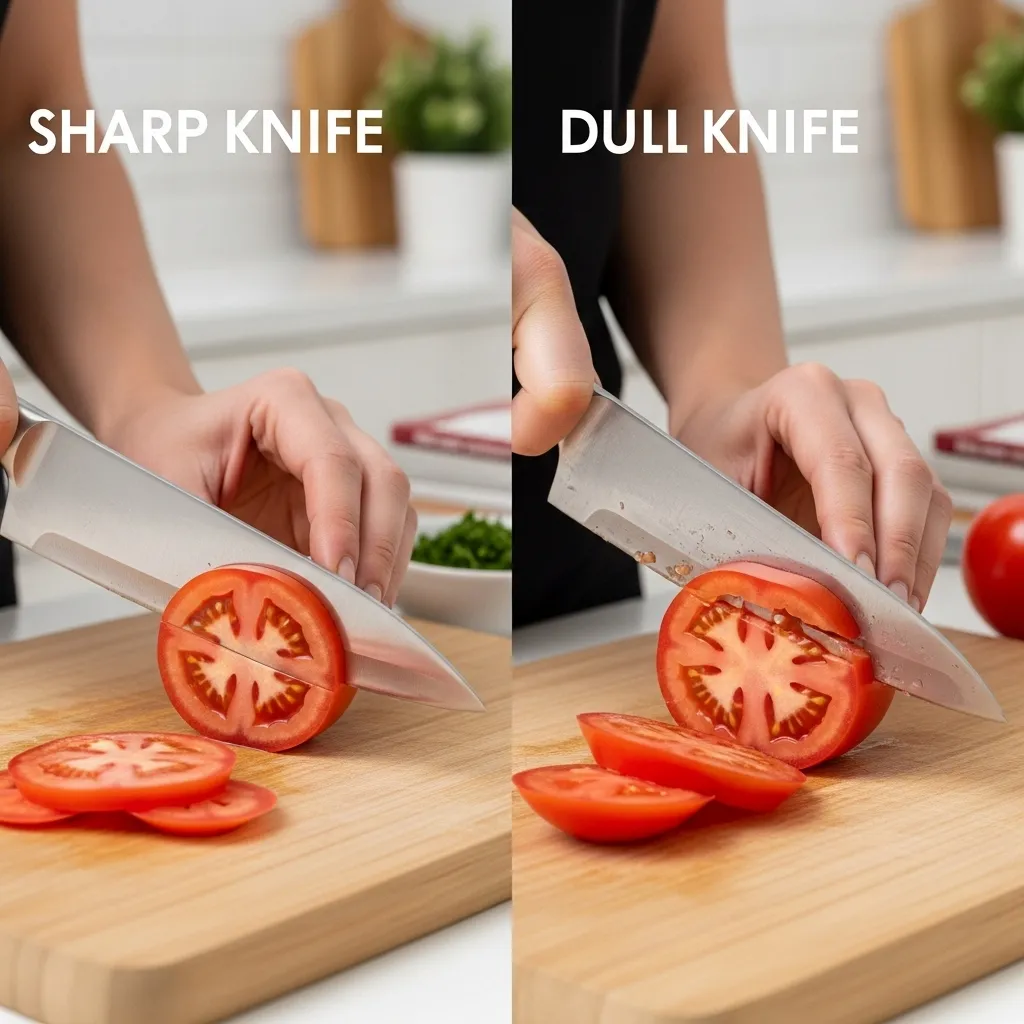
A sharp knife is a joy to use. It moves through food with less pressure, giving you clean cuts and more control. This is better for your ingredients and your hands. A dull blade can slip, which might lead to accidents. I’ve noticed that when my knife is sharp, I enjoy cooking more and feel safer.
The edge of a knife is where the cutting happens. Over time, this edge can bend or wear down from use. That’s why maintenance is key. By taking care of your knife, you help it stay effective and extend its life. Whether you’re slicing vegetables or carving meat, a well-kept edge makes the work smooth.
Getting to Know Your Knife
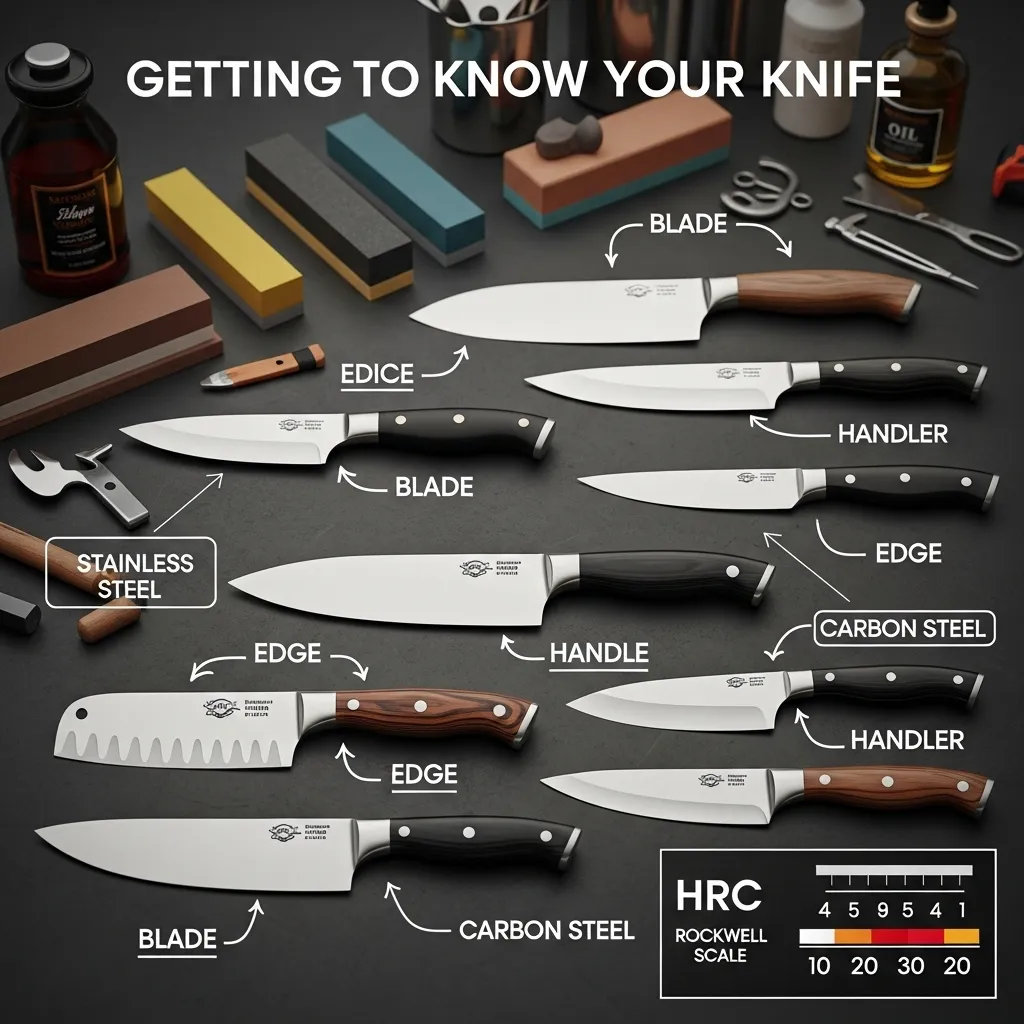
To care for your knife, it helps to know a bit about its parts. The blade is the metal part that does the cutting. The edge is the thin, sharp part along the blade. The handle is where you hold it. Different knives have different shapes, but most need similar care.
The material of the blade matters too. Many knives are made from stainless steel, which resists rust. Others might be carbon steel, which can get very sharp but needs more care to avoid corrosion. The hardness of the steel, often measured on the Rockwell scale (HRC), affects how long the edge lasts. Harder steel may hold an edge longer but can be more brittle.
Easy Daily Habits for Knife Care
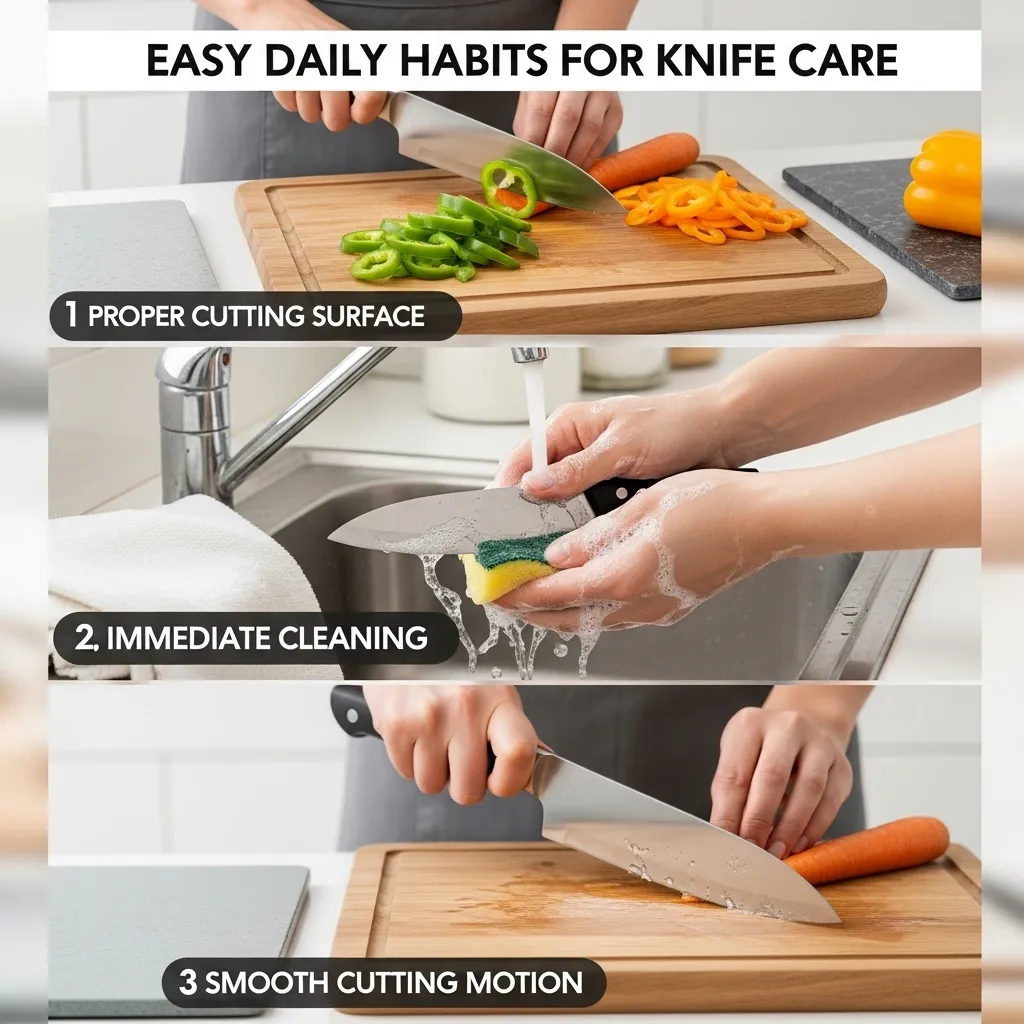
Good habits start with how you use your knife. Always use a cutting board made of wood or plastic. Glass or stone boards can dull the edge quickly. I like to use a wooden board because it’s gentle on the blade.
After each use, clean your knife by hand with warm water and soap. Dry it right away with a towel. Don’t leave it in the sink or put it in the dishwasher. The moisture and bumps can cause rust or damage the edge. This simple step of cleaning and drying helps prevent corrosion and keeps your knife ready for next time.
When you’re cutting, use a smooth motion. Let the knife do the work instead of forcing it. This reduces stress on the edge. Also, store your knife safely—don’t toss it in a drawer where it can bang against other tools. I’ll talk more about storage later.
Storing Your Knives the Right Way
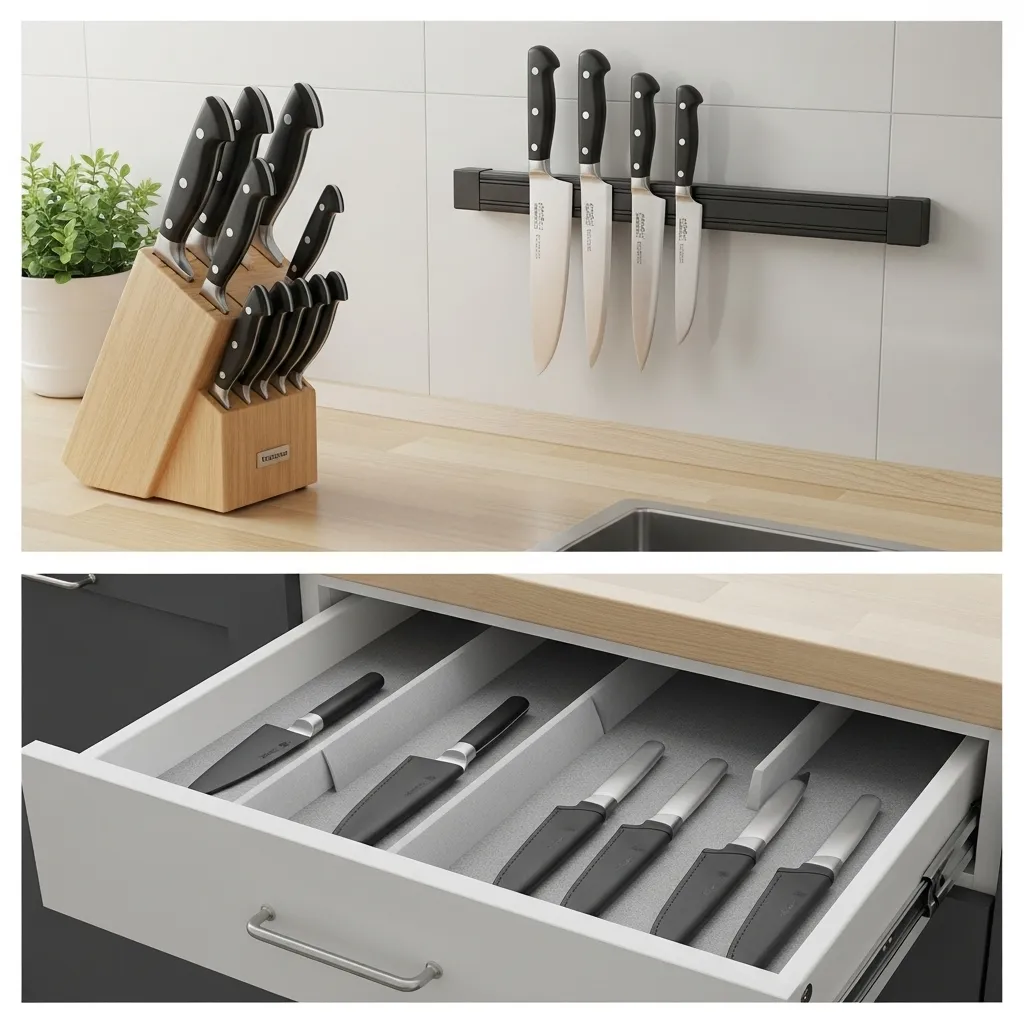
Proper storage protects your knives from damage. I recommend using a wood block, a magnetic strip, or individual sheaths. A wood block keeps knives upright and separate, so the edges don’t touch. A magnetic strip holds them on the wall, which saves space and keeps them visible. If you use a drawer, put each knife in a sheath or a lined divider to avoid contact.
I’ve tried all these methods, and the magnetic strip is my favorite. It’s easy to access and looks neat. Avoid throwing knives loosely in a drawer. The blades can chip or scratch, which hurts their sharpness.
Honing and Sharpening: What’s the Difference?
People often mix up honing and sharpening, but they do different things. Honing is like straightening the edge. When you use a knife, the very edge can bend slightly. A honing steel pushes it back into line. This helps maintain sharpness between sharpenings. I hone my knives every few uses to keep them cutting well.
Sharpening is when you remove a bit of metal to create a new edge. This is done with a tool like a stone when the knife is dull. Think of honing as regular tuning and sharpening as a full repair. Both are important for long-term care.
How to Hone a Knife with a Steel
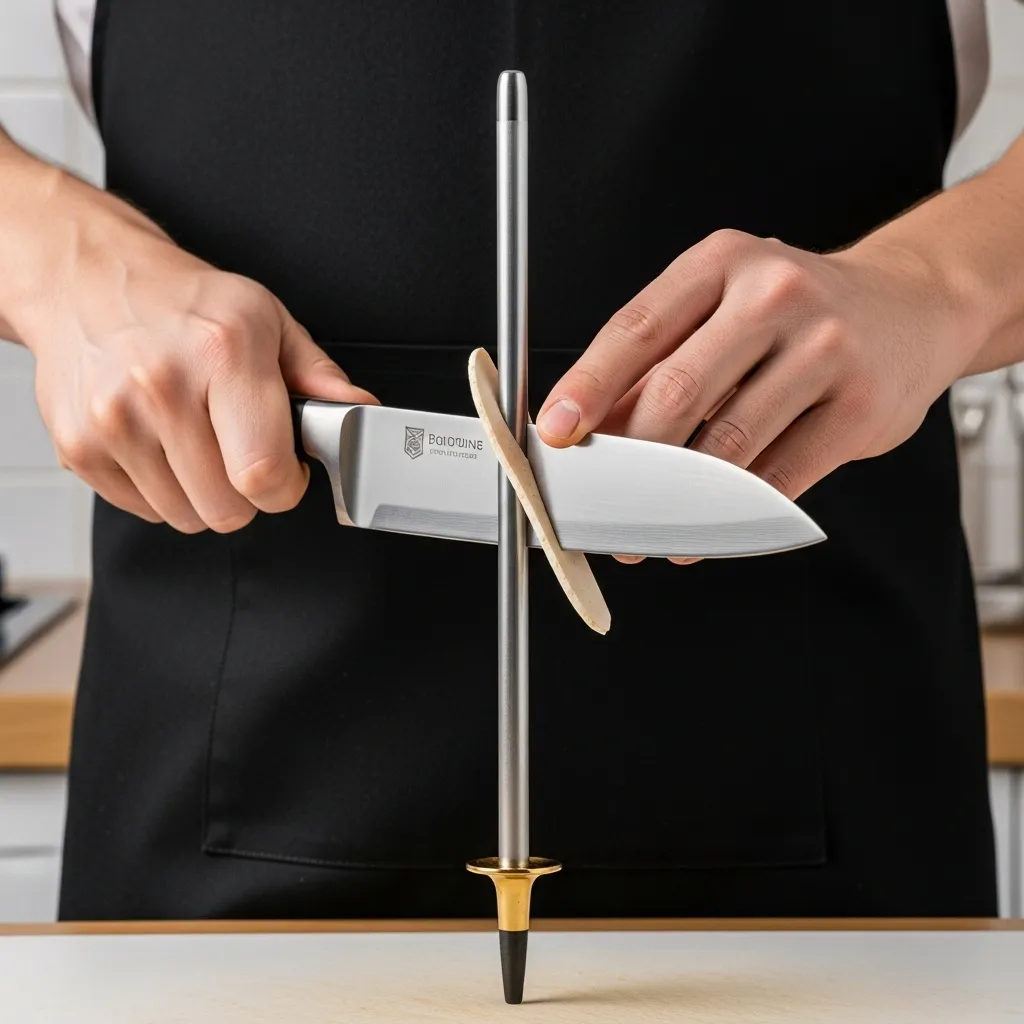
Honing is simple once you get the hang of it. Hold the honing steel vertically with the tip on a stable surface. Place the heel of the knife near the top of the steel at a small angle, usually about 15-20 degrees. Slide the knife down the steel in a sweeping motion, as if you’re slicing a thin piece off it. Do this on both sides of the blade a few times.
I practice this every week or so. It only takes a minute and makes a big difference. The goal is to realign the edge without taking off metal. If your knife still feels dull after honing, it might need sharpening.
Sharpening with a Whetstone
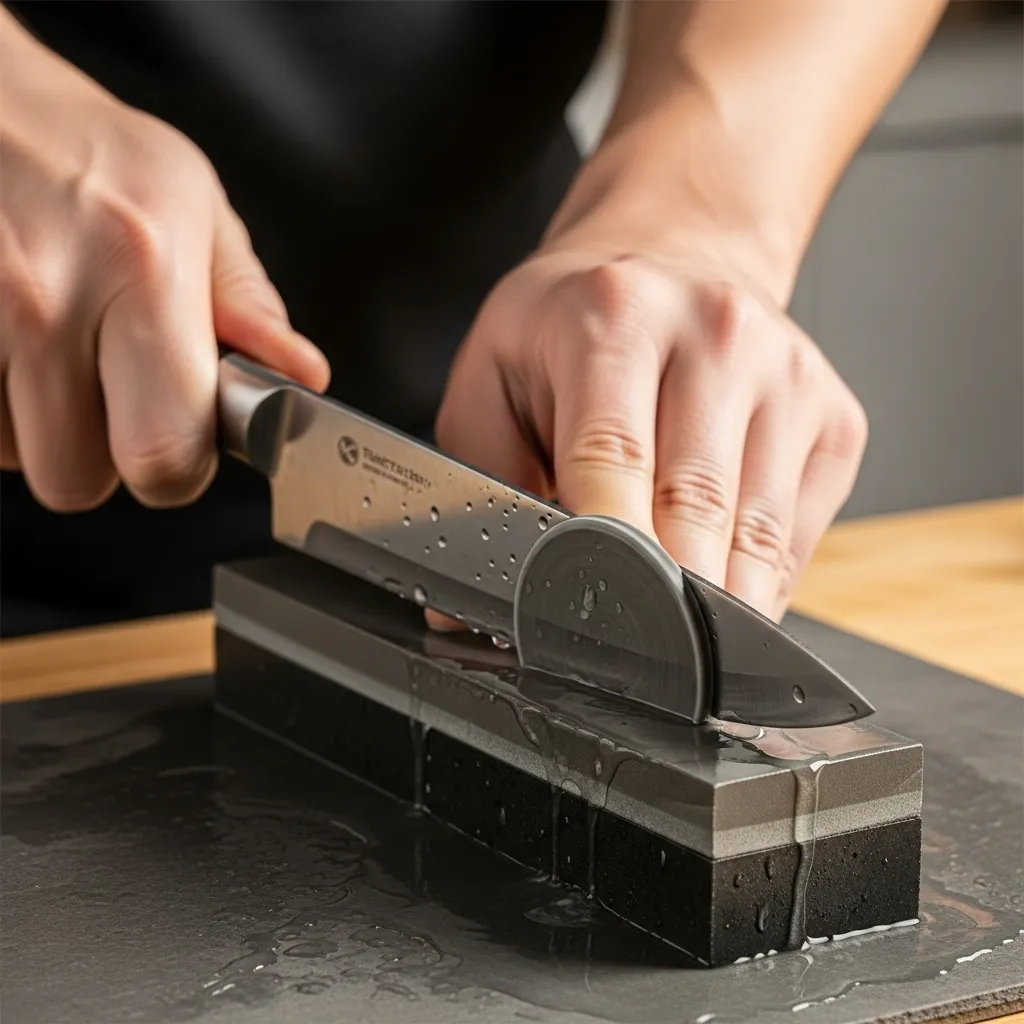
A whetstone is a great tool for sharpening. It uses water or oil to help grind the blade and create a sharp edge. Start with a coarse grit if the knife is very dull, then move to a fine grit for a smooth finish. Soak the stone in water for about 10 minutes before you begin.
Hold the knife at a consistent angle, around 15-20 degrees, against the stone. Push the blade across the stone in a circular or sweeping motion, covering the entire edge. Repeat on both sides until you feel a slight burr—a tiny lip of metal—on the opposite side. Then, use lighter strokes to remove the burr and refine the edge.
I sharpen my knives every few months, depending on how much I use them. It takes practice, but it’s very satisfying. After sharpening, rinse the knife and dry it well.
Other Useful Sharpening Tools
If a whetstone seems intimidating, there are other options. Manual sharpeners often have guided slots that hold the angle for you. They’re easy for beginners. Electric sharpeners are fast and can give good results, but be careful—they can remove more metal than needed.
Ceramic rods are good for touch-ups between sharpening sessions. Diamond stones are aggressive and work well for very dull knives. I’ve used a manual sharpener for years, and it keeps my knives in good shape. Choose what feels comfortable for you.
How Often to Maintain Your Knives
The frequency depends on how often you cook and what you cut. For honing, I do it every 2-3 uses. For sharpening, every 3-6 months is typical for home cooks. If you notice the knife slipping on tomatoes or crushing herbs instead of slicing, it’s time to hone or sharpen.
Listen to your knife. With experience, you’ll know when it needs attention. Regular care means you won’t have to sharpen as often.
Common Mistakes to Avoid
I’ve made some mistakes myself, so I’ll share what to watch for. Don’t use a glass cutting board—it’s too hard and will dull the edge fast. Avoid putting knives in the dishwasher; the heat and detergents can damage the handle and blade.
Don’t use too much force when cutting. Let the sharpness do the work. Also, store knives properly; don’t leave them lying around where they can get nicked. Finally, don’t skip honing—it’s a quick step that keeps the edge aligned.
Picking the Right Knife for You
The best knife is one that feels good in your hand. Consider the weight, balance, and handle grip. For most tasks, a chef’s knife is versatile. Look for a steel type that suits your needs—stainless steel is low-maintenance, while high-carbon steel offers excellent sharpness.
I prefer a knife with a comfortable handle and a blade that’s easy to sharpen. Your choice should match your cooking style and how much care you’re willing to give.
Cleaning and Drying for Longevity
Always wash knives by hand. Use mild soap and warm water, and dry them immediately. This prevents rust and keeps the edge sharp. If you see any food particles, rinse them off right away. For stubborn spots, a soft sponge works well.
I keep a towel handy for drying. It’s a small habit that protects your investment.
“Cooking is about confidence, and a good knife gives you that.” – Julia Child
Safety Tips for Handling Knives
Safety starts with a sharp knife—it’s more predictable than a dull one. Always cut on a stable surface. Hold the knife with a firm grip, and keep your fingers curled under to avoid the blade. When passing a knife, offer the handle to the other person.
Store knives where they won’t be grabbed accidentally. I teach my family to handle knives with respect, and we’ve had no issues.
“A sharp knife is a safe knife.” – Common chef sayin
Frequently Asked Questions for How to Maintain Knife Sharpness
How often should I hone my knife?
I recommend honing every few uses. If you cook daily, try once a week. It keeps the edge straight and cuts down on how often you need to sharpen.
What’s the difference between honing and sharpening?
Honing straightens the existing edge, while sharpening removes metal to create a new edge. Use honing for maintenance and sharpening when the knife is dull.
Can I use a glass cutting board?
It’s better not to. Glass is hard and can quickly dull your knife. Wood or plastic boards are safer for the edge.
How do I know when my knife needs sharpening?
If it struggles to slice through soft foods like tomatoes or peppers, or if it crushes instead of cuts, it’s time to sharpen. Honing might help if it’s only slightly off.
What’s the best angle for sharpening?
For most knives, 15-20 degrees is good. Check your knife’s instructions—some are designed for specific angles.
Is an electric sharpener good for knives?
It can be, but use it carefully. Electric sharpeners are fast but might remove more metal than necessary. I prefer manual methods for more control.
How can I prevent rust on my knife?
Dry your knife right after washing. Store it in a dry place. If you have a carbon steel knife, you might need to oil it occasionally.
Conclusion
Maintaining knife sharpness is a skill that gets easier with practice. By building simple habits like proper storage, regular honing, and careful cleaning, you can keep your knives sharp and reliable. Remember, a well-kept knife makes cooking safer and more enjoyable. Start with one or two tips from this article, and see how they work for you. I’m sure you’ll notice a difference in your kitchen routine. Happy cooking
“Take care of your tools, and they’ll take care of you.” – Anthony Bourdain

